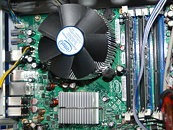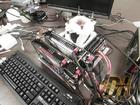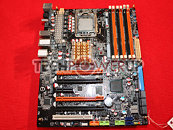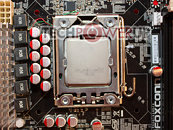
Thermaltake Reveals the XPRESSAR RCS100 Phase-Change Processor Cooling
Back in March 2008, Thermaltake introduced its first phase change cooling prototype. At the time, we were able to reveal only a few pictures, without knowing what was to come. Today Thermaltake said that after four years of research, the company's first DC inverter type micro refrigeration cooling system is finally ready to hit the market. The so-called Thermaltake XPRESSAR utilizes cyclic refrigeration method based on the vapor-compression refrigeration, to take away the heat produced by processors. Vapor-compression refrigeration systems use a circulating liquid refrigerant as cooling medium which absorbs and removes heat from the space to be cooled and subsequently reject that heat elsewhere. All such systems have four components: a compressor, a condenser, an expansion valve, and an evaporator. For now the XPRESSAR phase-change cooling will be paired with a Xaser VI case and sold as XPRESSAR RCS100. The total weight of both parts will equal to 22.2kg. Thermaltake ensures that such a system will result in 20ºC better temps than most liquid-based systems, and also be compatible with all Intel LGA775 and LGA1366 (Nehalem) processors (maybe an AMD kit will be released sometime later). More information on the XPRESSAR RCS100 can be found here. Pricing and availability are still to be announced. It's time for the reviews now.




























